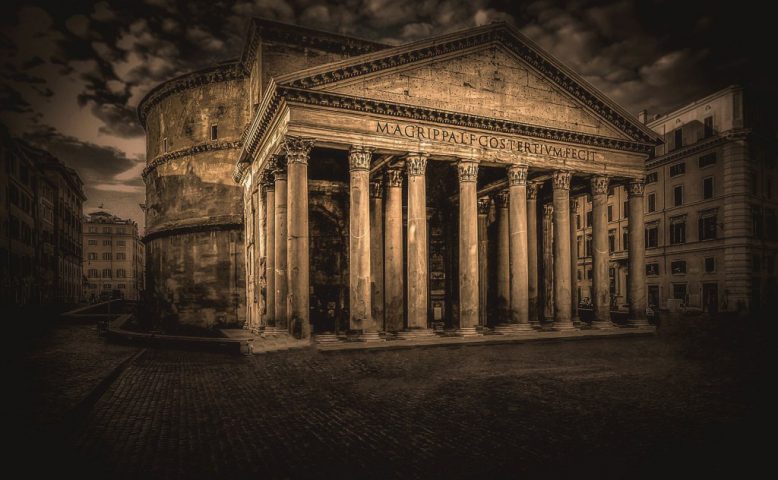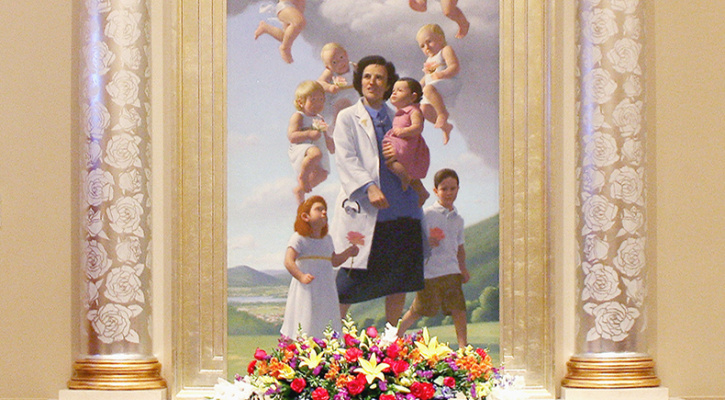 In the wake of growing crisis in the Church that came into more stark relief after the startling resignation of Pope Benedict and the equally startling and disheartening papacy of Pope Francis, a number of Catholic prophecies came under widespread discussion. Among the most prominent was Blessed Anne Catherine Emmerich’s oft (partially quoted) vision on the “relationship between two popes,” and the “baleful consequences” of the “false Church” that would supposedly follow.
In the wake of growing crisis in the Church that came into more stark relief after the startling resignation of Pope Benedict and the equally startling and disheartening papacy of Pope Francis, a number of Catholic prophecies came under widespread discussion. Among the most prominent was Blessed Anne Catherine Emmerich’s oft (partially quoted) vision on the “relationship between two popes,” and the “baleful consequences” of the “false Church” that would supposedly follow.
It seemed to many that the vision was a glimpse offered to Blessed Anne Catherine Emmerich of our troubled times and our troubled Church, particularly with its precise reference to “two Popes.”
However, the full context of that vision, as ably demonstrated by Steve Skojec on OnePeterFive in 2016, did not support that interpretation. The vision, in its entire context, seemed to refer not to two Popes at the same time, but two Popes set apart by quite a lot of time. To some, that seemed a disappointing interpretation as we desperately try to make sense of the situation in the Church we currently find ourselves.
Yet, the vision, understood in its full context, may even be more striking in its precision about current events and what it tells us about the root causes of our current problem. I recommend you read Steve Skojec’s full piece on the vision, but for the sake of brevity, I will try to fairly sum up its contents.
The vision relates to Popes and the Church in different times, one ancient and one modern, and the Pantheon. The first part of the vision clearly refers to Pope Boniface IV and his dealings with the emperor (Phocas) about how the Pantheon, a Roman temple dedicated to all the pagan Roman gods, would be transformed into a Catholic Church and that all the pagan filth and the worship of things other than God would be stricken from the temple.
On May 13th in the year 609, the cleaned temple was dedicated to St. Mary and the Martyrs and Blessed Emmerich, in her vision “…saw the consecration of the temple, at which ceremony the holy martyrs assisted with Mary at their head. The altar was not in the center of the building, but against the wall.”
In a description given in “Il Settimanale di Padre Pio” (the Weekly Magazine of Padre Pio), 10 December 2017, n. 48., as quoted here*, we are given an understanding of just how dramatic an event it was when Pope Boniface IV claimed the former pagan temple for Christ:
At one time, when the city was still pagan, all of the gods of Roman polytheism were venerated there in one place. In A.D. 608 the Byzantine Emperor Phocas gave it to Pope Boniface IV, and an evocative ceremony was organized to consecrate it to the Christian God. On May 13, 609, a huge crowd gathered in the environs of the Pantheon to assist at the event. The historical chronicles describe the commotion and chilling screams which came out from the Pantheon: the pagan demons were aware of what was about to happen. The great doors were opened, and the Pope, standing before the threshold, began to recite the formulas of exorcism. The cries of the idols increased in intensity and the commotion stunned the ears of those standing outside. Fear seized the crowd, and nobody was able to remain on their feet watching and hearing the horrific spectacle. Only Pope Boniface IV resisted and, undeterred, continued to pray and consecrate the Pantheon to Christ. It is said that the demons fled the ancient temple in disorder, causing a great din, fleeing out of the open eye in the cupola or out of the great doorway.
When the ceremony was completed, the Pope dedicated the edifice to the Madonna of the Martyrs, in honor, perhaps, of the many Christians who had been killed in honor of all of those unclean idols. The Christianization of Rome was a gradual process which involved the systematic reconversion of the ancient places of worship which had at one time been dedicated to the pagan gods. The renovatio Urbis(renovation of the City) in a Christian key, which was begun by Saint Gregory the Great (590-604), was carried to completion by his successors and lasted until Pope Sixtus V in the 16th century.
It was difficult to drive the old beliefs out of Rome, and even today there is folklore about these idols who, it is said, continually make an effort to reenter the City.
Before I move on to the latter part of Emmerich’s vision, I want to note two key items of the vision as it pertains to the end of false worship at the Pantheon. Firstly, the date of May 13th should stand out to all Catholics at the same day that the Apparitions of Our Lady at Fatima began. It should also be noted that Blessed Emmerich’s vision took place on May 13th, 1820. So the day is one thing to note. The other is the altar. Blessed Emmerich’s vision makes particular note of the altar in the Pantheon as this will figure in the other part of the vision.
Then, in her vision, Blessed Emmerich is taken to a different time of which we she has seen often in her visions. A time of darkness in the world and in the Church. Again, she sees a temple, perhaps (likely) the same temple, but at this future time (from her perspective.) But now in this temple, a temple with no altar, the worship of idols has returned.
“When I had witnessed this vision even in the smallest details, I saw again the present Pope and the dark church of his time in Rome. It seemed to be a large, old house like a town hall with columns in front. I saw no altar in it, but only benches, and in the middle of it something like a pulpit. They had preaching and singing, but nothing else, and only very few attended it. And lo, a most singular sight! Each member of the congregation drew an idol from his breast, set it up before him, and prayed to it. It was as if each man drew forth his secret thoughts or passions under the appearance of a dark cloud which, once outside, took some definite form.”
In this temple of her vision, the altar (previously against the wall in her vision) is missing and the few attendees are now worshipping idols that spring from themselves, an idolatry of self.

“I saw no altar in it, but only benches, and in the middle of it something like a pulpit. They had preaching and singing, but nothing else, and only very few attended it.” – Bl. Anne Catherine Emmerich
It is precisely this sort of self-worship of our own idols, the focus on man in worship instead of God, that has been element of post Vatican II abandonment of ad orientem worship universally in favor of the versus populum. Many people have noticed this fundamental change in the orientation of our worship and the sacking of altars in favor of “tables” and self-referential nature of our liturgy and worship. Many have also rightly noted the crisis and dark Church that have emerged from this change, bringing us right to this terrible moment in the life of the Church.
Blessed Emmerich says more about what she saw:
“The most singular part of it was that the idols filled the place; the church, although the worshippers were so few, was crowded with idols. When the service was over, everyone’s god re-entered into his breast. The whole church was draped in black, and all that took place in it was shrouded in gloom.
Then I saw the connection between the two Popes and the two temples.
So now the really interesting part. At the Basilica Santa Maria ad Martyres, the Pantheon, the beautiful old altar against the wall as in Blessed Emmerich’s vision has remained, a fact that has never sat well with people who have brought us this current crisis and this Church of Darkness. This is something Vicar General of Rome has wanted to change. And now they have.
The “News” section of the website for the Basilica announces that a “Delegate of the Holy Father, His Excellency Mons. Angelo De Donatis, Vicar General of the Diocese of Rome” will perform the Dedication of the new permanent “fixed” bronze altar for the facilitation of versus populum worship.
When? May 13, 2018, of course.
* Translated by Giuseppe Pellegrino
https://onepeterfive.com/anne-catherine-emmerich-the-two-popes-pagans-and-the-pantheon/







